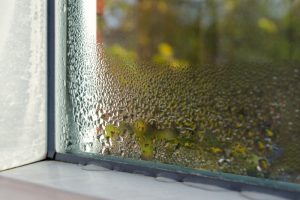Humidity plays a crucial role in maintaining a comfortable and healthy indoor environment. When humidity levels are too high or too low inside your house, it can lead to various issues, including health problems and structural damage to your home.
Understanding Humidity
Humidity refers to the amount of moisture in the air. The ideal indoor humidity level typically ranges between 30% and 50%. Levels above or below this range can cause discomfort and potential health risks. High humidity can create a breeding ground for mold, mildew, and dust mites, while low humidity can cause dry skin, respiratory issues, and damage to wooden furniture and flooring.
Signs of High Humidity
- Condensation: If you notice condensation on your windows, mirrors, or walls, it is a clear sign of excessive moisture in the air.
- Musty Odors: A persistent musty smell in your home often indicates mold or mildew growth, which thrives in high-humidity environments.
- Visible Mold: Mold appears as black, green, or white spots on walls, ceilings, or other surfaces. It not only damages the surfaces it grows on but can also pose serious health risks/reactions.
- Damp or Rotting Wood: High humidity can cause wood to absorb moisture, leading to swelling, warping, or rotting. This can affect wooden furniture, flooring, and even structural elements of your home.
Signs of Low Humidity
- Dry Skin and Irritation: Low humidity levels can lead to dry, itchy skin, and irritation of the eyes, nose, and throat. People with respiratory conditions, such as asthma, may find their symptoms worsen in dry environments.
- Static Electricity: Excessively dry air increases static electricity, leading to frequent shocks when touching objects or other people.
- Cracking Paint and Furniture: Wooden furniture and painted surfaces can crack and peel in low-humidity conditions as the lack of moisture causes the materials to dry out and shrink.
Monitoring Humidity Levels
Using a hygrometer is the most effective way to monitor the humidity levels in your home. Hygrometers are inexpensive and can be placed in different rooms to provide accurate readings of the indoor humidity.
Addressing Humidity Problems
High Humidity Solutions:
- Ventilation: Ensure proper ventilation in high-moisture areas, such as kitchens, bathrooms, and basements.
- Dehumidifiers: Installing a dehumidifier is an effective way to reduce indoor humidity levels. For those in Columbia City, IN, a professional dehumidifier installation can guarantee optimal performance and efficiency.
Low Humidity Solutions:
- Humidifiers: Adding a humidifier to your home can increase moisture levels in the air, making it more comfortable during dry seasons.
- Houseplants: Certain houseplants can help maintain humidity levels by releasing moisture into the air through a process called transpiration.
Maintaining the right humidity levels in your home is crucial for comfort and health. Whether you need to reduce humidity through proper ventilation and dehumidifier installation in Columbia City, IN, or increase it with humidifiers and houseplants, taking action will ensure your home remains a safe and comfortable place for you and your family.
When in doubt, just contact Collier’s Heating & Air Conditioning. Colliers—A company you’ve grown to trust.

